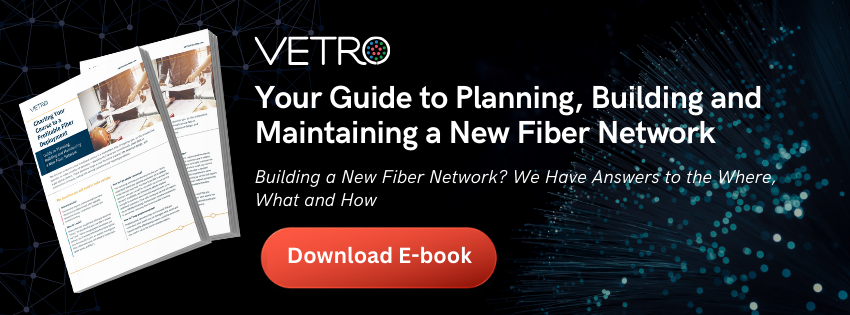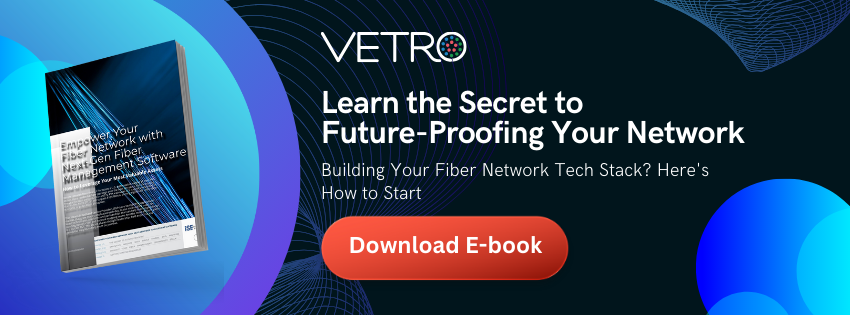Understanding As-Built Survey Cost in Broadband Networks: Definitions, Drivers, and Data Insights
In today’s competitive broadband industry, the intricacies of network deployment extend far beyond installation. Executive leaders increasingly seek clarity on investment decisions, especially when it comes to the “as-built survey cost.” This blog post demystifies the concept of as-built surveys, explains their cost dynamics, and highlights best practices to manage these costs effectively. We will also discuss how leveraging cutting-edge data insights, particularly through VETRO’s advanced fiber management solutions, can transform the surveying process.
Are you prepared to optimize costs while ensuring network accuracy and compliance?
Defining the As-Built Survey in the Broadband/Fiber Industry
An as-built survey is a comprehensive record of a network’s actual physical infrastructure after installation. In the context of broadband and fiber deployments, these surveys capture every detail—from the precise location of fiber cables to the installation depth and routing of conduits. They are not merely technical reports; they are foundational documents that verify that the network has been built according to design specifications and regulatory standards.
Consider a conceptual flowchart that outlines the as-built survey process: starting from initial design plans, moving through on-site inspections, and culminating in detailed documentation. Such a chart would visually demonstrate how each step feeds into cost analysis and project verification. These visual assets could later be developed into interactive infographics for presentations or internal training modules.
For broadband network operators, as-built surveys are critical. They provide the empirical data necessary for validating network integrity and support future maintenance, expansions, and troubleshooting. In many cases, these surveys are required by regulatory bodies, ensuring that infrastructure meets stringent compliance benchmarks. However, the quality and accuracy of these surveys directly influence the overall cost of the project. As the industry evolves, understanding the detailed breakdown of as-built survey cost becomes paramount for decision-makers looking to maximize return on investment while mitigating risk.
Why is this so vital? Because even minor inaccuracies in the as-built survey can lead to significant financial discrepancies over time. With the pressure to maintain efficient, robust networks, companies must ask: are our current surveying methods truly cost-effective and reliable? This inspection is where VETRO’s data-driven solutions come into play, offering precision and transparency that traditional methods often lack.
The Economics Behind As-Built Survey Cost: Key Drivers and Influences
The cost of an as-built survey in the broadband industry is influenced by multiple variables. Labor costs, equipment usage, and technology investments form the backbone of the overall expense. To understand these drivers, imagine a segmented bar chart that breaks down the total cost into key components: labor (35%), equipment and technology (30%), data processing and analytics (20%), and miscellaneous expenses (15%). Such a visualization would provide a clear, immediate understanding of where most resources are allocated and highlight potential areas for cost savings.
Labor remains one of the most significant contributors to survey cost. Skilled professionals are required to conduct thorough site inspections and accurately document the network’s real-world implementation. In regions with complex regulatory environments, the need for precision further drives up labor expenditures. Moreover, equipment costs have surged as companies invest instate-of-the-art surveying tools, such as LiDAR, drones, and advanced mapping systems, all designed to enhance accuracy and reduce on-site errors.
Another critical cost factor is data processing. Once field data is collected, it must be translated into usable information through sophisticated software solutions. This step, often overlooked, represents a substantial investment, particularly when legacy systems are used. In today’s digital age, modern software platforms can reduce processing time and errors, thereby lowering overall costs.
Regulatory compliance and risk management also play crucial roles. Non-compliance can result in fines and additional costs to retrofit networks, making high-quality as-built surveys indispensable. Have you considered the long-term implications of inaccuracies in your network documentation? The question is essential for executives weighing the benefits of investing in improved surveying methodologies versus the risks associated with outdated practices.
By understanding these cost drivers, decision-makers can identify opportunities for optimization. Streamlined processes, coupled with advanced software solutions like those offered by VETRO, can minimize human error and reduce labor intensity, resulting in significant cost savings. The integration of reliable data analytics not only clarifies the financial landscape but also sets the stage for more strategic planning in network management and expansion.
Best Practices for Managing As-Built Survey Costs in Broadband Projects
Managing as-built survey costs requires a combination of strategic planning, technological integration, and continuous improvement. One effective approach is the adoption of standardized processes that integrate advanced software solutions throughout the surveying lifecycle. By using a standardized framework, companies can ensure consistency and accuracy while reducing redundant efforts that often inflate costs.
A conceptual line graph can illustrate cost trends over time, comparing projects that implemented standardized surveying methods against those using ad-hoc approaches. The graph might show a downward trend in overall costs for standardized methods, demonstrating the financial benefits of a consistent approach. This visualization could also highlight key inflection points where technological investments began to yield significant savings.
Investment in advanced data analytics tools is another best practice. Modern software platforms enable real-time data collection, immediate validation, and efficient error detection. This not only minimizes costly rework but also ensures that any deviations from the original design are promptly addressed. Moreover, automated data processing reduces dependency on manual labor, lowering overall operational costs.
Embracing an integrated system that connects field data collection with centralized analytics is critical. For broadband and fiber companies, this integration provides a seamless transition from survey to analysis, enabling rapid decision-making. In addition, cross-departmental collaboration is essential. When engineering, finance, and regulatory teams share a unified data source, discrepancies can be identified and rectified before they escalate into larger financial issues.
Regular training and certification for field personnel on the latest surveying technologies and software platforms can also mitigate risks. An informed workforce is better equipped to leverage new tools and methodologies, ensuring that the as-built surveys remain accurate and cost-effective. Have you examined your current process for potential gaps that might be inflating your costs unnecessarily? Identifying these areas is the first step toward more efficient operations.
In summary, best practices for managing as-built survey costs revolve around technological integration, process standardization, and workforce empowerment. These strategies not only drive cost reductions but also enhance the reliability and accuracy of survey data, ultimately leading to more informed decision-making and improved network performance.
Leveraging Data Insights with VETRO’s Software Solutions for Accurate As-Built Surveys
For broadband and fiber companies aiming to control and reduce as-built survey costs, advanced software solutions offer a transformative advantage. VETRO’s suite of products, including FiberMap for Engineering and FiberMap for Operators, is designed to streamline the entire surveying process from field data capture to analytical insights. With these tools, companies can significantly reduce manual errors, accelerate data processing, and achieve superior network documentation.
Imagine a comparative chart that displays traditional surveying methods versus VETRO’s integrated software approach. The chart would highlight key performance indicators such as survey accuracy, turnaround time, and overall cost efficiency. Such a visual asset can powerfully convey how VETRO’s solutions optimize resource allocation and improve operational efficiency. VETRO’s FiberMap for Engineering platform automates the collection and management of as-built survey data. By digitizing field processes and integrating real-time data analytics, the
platform ensures that every aspect of the network is accurately documented and readily accessible for future planning. This digital transformation is critical for companies striving to maintain high operational standards while keeping costs under control.
Furthermore, VETRO’s FiberMap for Operators enhances collaboration between field teams and central management. With a unified dashboard that displays live data insights, decision-makers can monitor project progress, identify potential cost overruns, and adjust resource allocation in real time. This transparency not only improves operational efficiency but also builds confidence among executive leaders who are responsible for multi-million dollar investments.
The implementation of these solutions leads to several measurable benefits: reduced labor hours, minimized rework, enhanced data accuracy, and ultimately, lower overall as-built survey costs. In an industry where every dollar counts, having a reliable and scalable platform is essential for staying ahead of the competition. By integrating VETRO’s software solutions, broadband companies can ensure that every survey is a stepping stone towards operational excellence and cost efficiency.
Have you ever wondered how a single technological upgrade could redefine your network management strategy? With VETRO’s advanced data insights and automation capabilities, the answer becomes clear: the future of broadband network management is both digital and cost-effective.
The Future of As-Built Survey Cost Optimization in Broadband Networks
As the broadband and fiber industries continue to evolve, the need for cost-effective and accurate as-built surveys is more critical than ever. Future trends point toward an increasing reliance on digital transformation, where automation and data analytics not only reduce costs but also enhance the overall quality of network documentation. The integration of emerging technologies—such as artificial intelligence (AI), machine learning (ML), and Internet of Things (IoT) sensors—promises to further refine the surveying process.
Consider a futuristic graph illustrating projected cost savings over the next five years as companies adopt AI-driven surveying technologies. This conceptual chart could depict a steep decline in overall survey costs, correlating with increased data accuracy and reduced human intervention. Such visual representations can be compelling tools for executive presentations, reinforcing the strategic value of investing in advanced surveying solutions.
Moreover, the convergence of digital platforms with cloud computing will pave the way for real-time data sharing and collaborative decision-making. With secure, cloud-based systems, broadband companies can access updated as-built survey data anytime, anywhere. This level of accessibility not only improves project management but also supports regulatory compliance, ensuring that every installation meets the necessary standards without incurring unexpected costs.
The advent of 5G and its rapid deployment further intensifies the need for precise as-built surveys. As network operators roll out new infrastructure at an unprecedented pace, the margin for error becomes minimal. Advanced surveying solutions, like those provided by VETRO, will be instrumental in ensuring that networks are built accurately, safely, and within budget. The industry is moving toward a future where data-driven decisions, enabled by sophisticated software, will determine the success of every broadband project.
In this evolving landscape, executive leaders must ask themselves: how can we harness the power of technology to not only reduce our as-built survey costs but also enhance our network’s long-term viability? Embracing innovation today means securing a competitive edge tomorrow, as improved accuracy and operational efficiency become the cornerstones of successful broadband deployment.
Why VETRO Can Help Your Company
VETRO stands at the forefront of innovation in broadband network management by offering a comprehensive suite of software solutions that streamline as-built surveys and reduce overall costs. Our platforms—FiberMap for Engineering and FiberMap for Operators—are designed to integrate seamlessly with your existing workflows, ensuring that every piece of network data is accurate, accessible, and actionable. With VETRO, your company can eliminate costly errors, accelerate project timelines, and enhance compliance with industry standards. Executive
leaders can rest assured knowing that our data-driven approach not only optimizes operational efficiency but also positions your company for long-term success in a rapidly evolving market. VETRO’s commitment to precision and innovation is your competitive advantage in the broadband and fiber industry.
In conclusion, understanding and managing as-built survey cost is essential for any broadband company striving for operational excellence and fiscal responsibility. By leveraging advanced software solutions and embracing data insights, you can transform how your network is documented and maintained—ensuring that every project contributes to a robust, reliable, and cost-effective infrastructure.
Embrace the future of broadband surveying with confidence, and let VETRO guide your journey toward smarter, more efficient network management.


